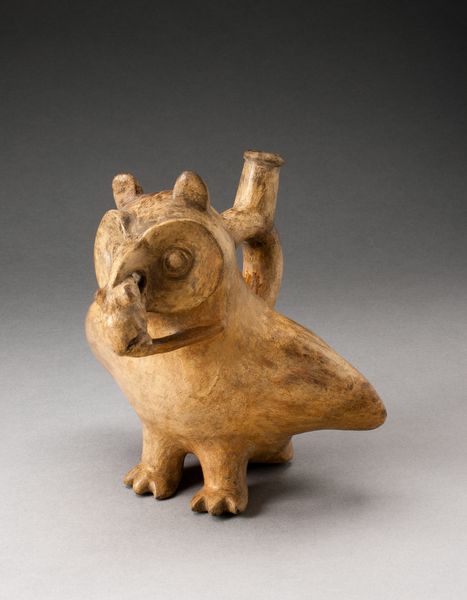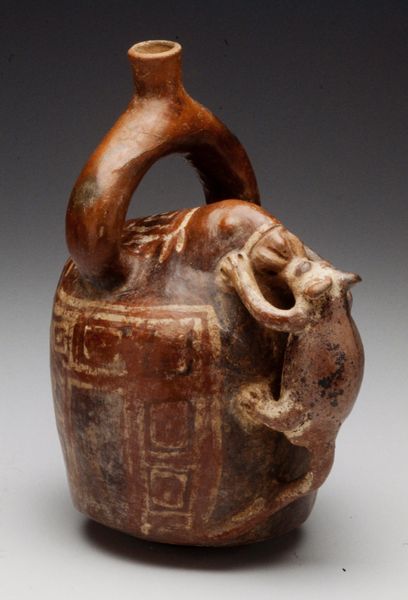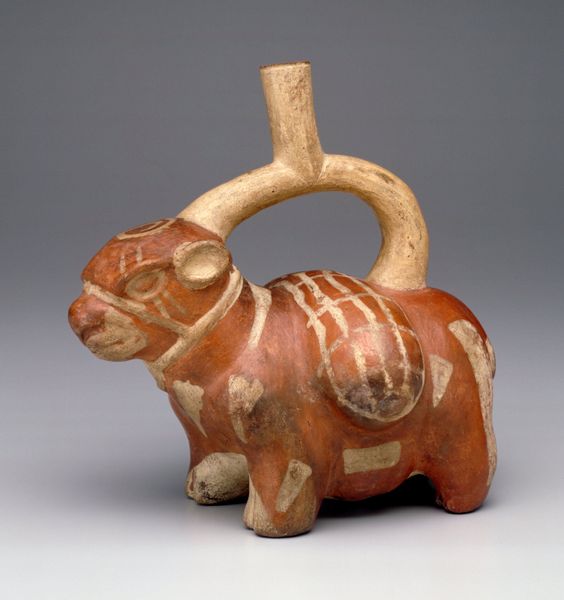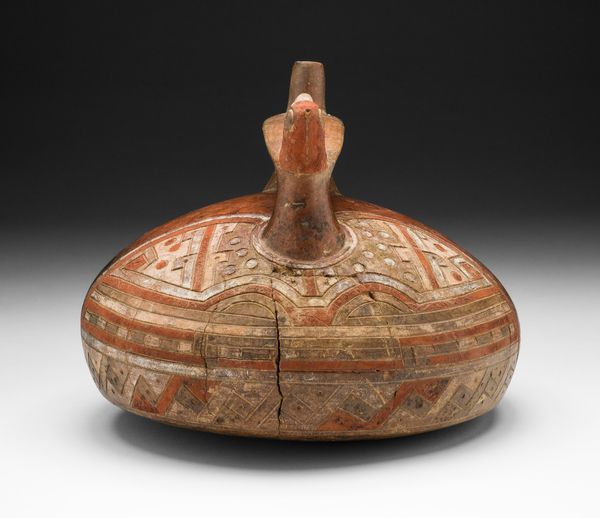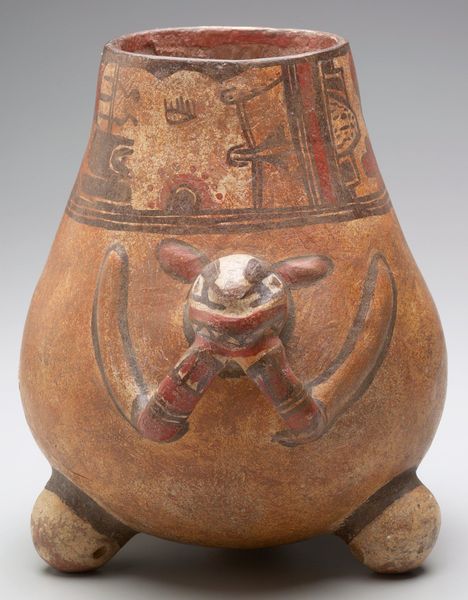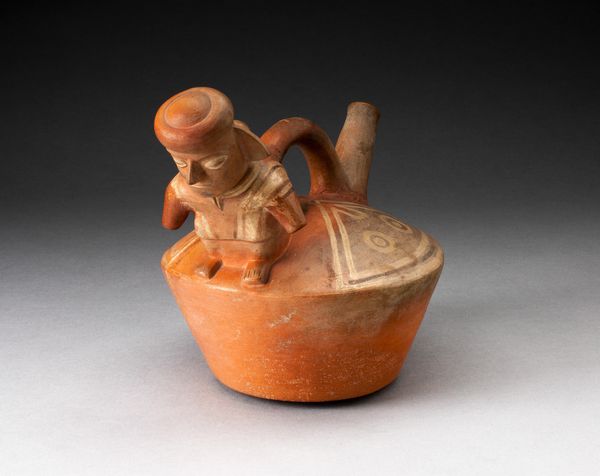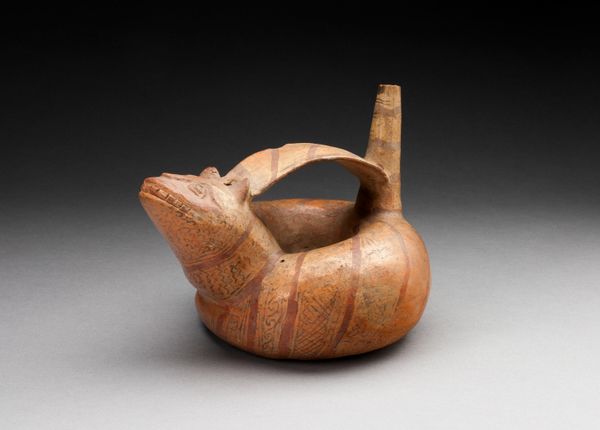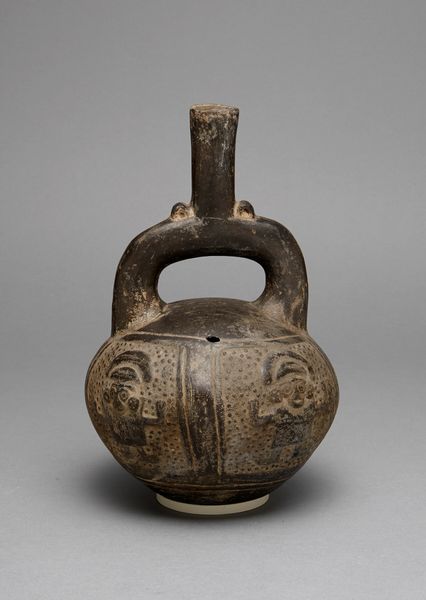
Square Handle Spout Vessel with Form of a Bird Eating a Lizard c. 100 - 500
0:00
0:00
ceramic, sculpture, terracotta
#
sculpture
#
ceramic
#
figuration
#
sculpture
#
terracotta
#
indigenous-americas
Dimensions: 18.7 × 17.5 × 19.4 cm (7 3/8 × 6 7/8 × 7 5/8 in.)
Copyright: Public Domain
Curator: This ceramic vessel, currently residing at The Art Institute of Chicago, is known as "Square Handle Spout Vessel with Form of a Bird Eating a Lizard." It dates back to approximately 100 to 500 AD, a period associated with the Moche civilization. Editor: My initial response is, wow, there's so much raw energy. The form itself, combining angular geometric patterns with organic shapes, is fascinating. The colour is earthy, but somehow powerful; I wonder what it symbolised to them? Curator: Considering its place in Moche society, we have to unpack this vessel within a specific context. This artwork can provide insights into ritual practices, cosmological beliefs, and potentially social hierarchies, especially noting how animals represented social groups. Editor: Right, but I’m drawn to the core, fundamental meaning embedded in that image. A bird, a predator, triumphing over another creature – that’s an archetypal visual narrative! Don't you see it relating to deeper aspects of the human condition, not just a specific culture? Curator: It’s impossible to separate art from the people who make it, though. For example, we can analyze the representation of the lizard being consumed and correlate it to the power dynamics of the Moche people, exploring colonial histories and subjugation through an intersectional approach. Editor: That reading seems very anachronistic! The Moche likely wouldn't understand that theoretical framework. I see the depiction of predator and prey as part of a continuous, perhaps cyclical view of nature... it's visually asserting that life and death are just turns of the same wheel. Curator: Perhaps, but we have to address power constructs as potentially implicit even if they're not explicit. Who gets to visually represent narratives of conquest or sustenance says so much. Do we consider how this imagery reinforces social inequality, either then or in how we view it now? Editor: Well, the image certainly inspires us to ask complex questions of power, as we should. As the bird dominates the lizard we think of survival; this struggle represented universally. Curator: Yes, and it serves as an important example of how one relatively small vessel can ignite powerful conversations about cultural heritage, social order, and the ongoing act of interpretation. Editor: Absolutely, it helps us explore how symbols and imagery gain layers of meaning through both cultural intention and our individual experiences as viewers across centuries.
Comments
No comments
Be the first to comment and join the conversation on the ultimate creative platform.
